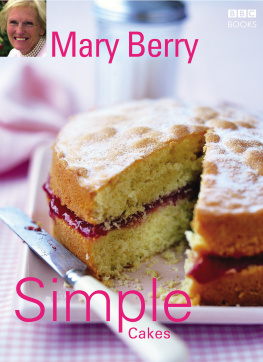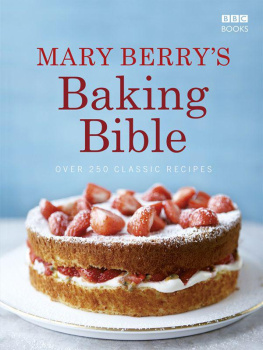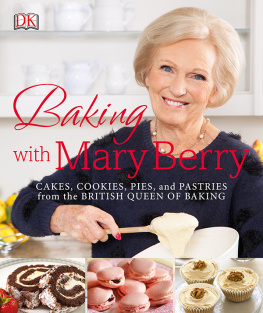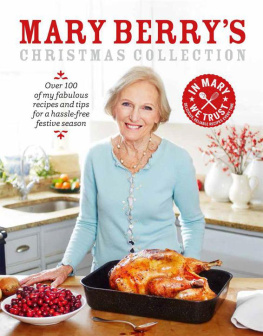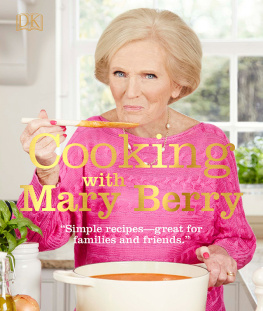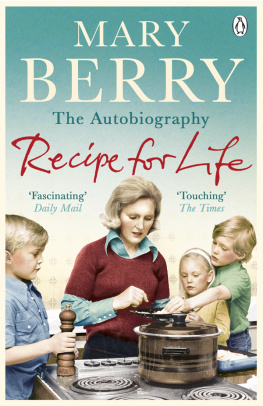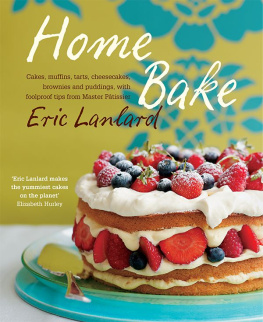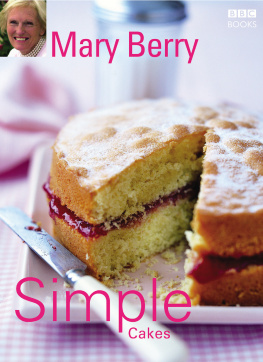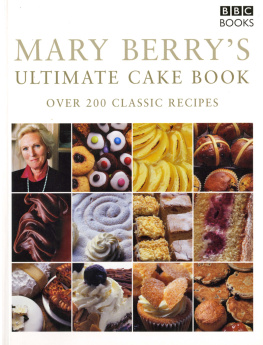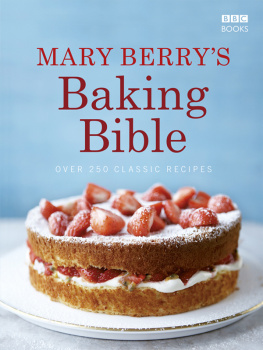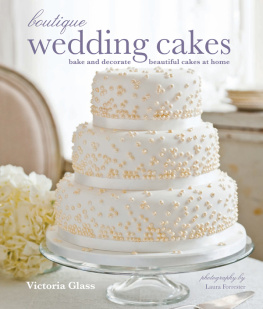Contents
Introduction
There really is nothing to beat a good home-made cake. There is no mystique about making them. You simply need to follow a good, sound recipe meticulously, use the very best ingredients, bake it in the right-sized tin at the advised oven temperature and then enjoy the result. In this book I have chosen the most popular classics, plus a few of my own favourites, and given step-by-step instructions for success with all of them.
Baking is a very straightforward science. The most important thing is to weigh out the ingredients accurately: 50 grams more flour in a cake would make it heavy and dry unlike a soup or casserole, for example, where a few extra grams of meat or vegetables would not make any difference to the end result. I am often told by people that their granny made the best cakes they had ever tasted but she never weighed anything. However, when you stop to think about it, in the past there wasnt the choice we have now and most likely she only ever made a Victoria sandwich and a fruit cake, using the same tablespoon and cup to measure the ingredients every time. So even if she didnt weigh the ingredients she had an accurate system of measuring, and the recipes were probably handed down to her with the very same spoon and cup!
Fortunately, things are much easier in the kitchen nowadays. Not only do we have accurate scales but most of us also have electric mixers and food processors, so cake making is a doddle.
Cakes arent just for teatime. Many of the cakes in this book can double up as dessert for example, Lemon Meringue Roulade (). Ive included a good selection of biscuits, too, which can be served with ice creams and creamy desserts, added to a lunchbox, or simply enjoyed as a snack at any time of day.
Im often asked how I manage to eat all these delicious cakes without becoming huge. The answer is to have a small slice, and not too often. Enjoy cakes in moderation, with family and friends, and you wont find the pounds piling on.
Cake-making Methods
All-in-one method
This is so simple and, to my mind, the easiest and best method for most cakes, traybakes and Victoria sandwiches. Simply measure all the ingredients into a large mixing bowl I usually put the eggs in first and the rest of the ingredients on top. If butter or margarine is being used, it must be soft, at room temperature, so that it blends in easily with the rest of the ingredients. You can soften it in a microwave, if necessary, but take great care. It should be just soft, not overheated and oily. Beat for a short time, just until the ingredients are mixed this can be done with a hand-held electric mixer, a free-standing mixer or in a food processor. Dont overbeat, otherwise the cake will be close-textured. As the beating time is so short, a little baking powder is added to the mixture in most recipes, even if self-raising flour is being used, to give extra rise.
Creaming
This is beating the fat (usually butter or margarine) and sugar together at room temperature until light and fluffy, then beating in the eggs and lastly folding in the flour by hand. I rarely use this method now, as I get quicker and consistently better results with the all-in-one method.
Whisking
Most whisked cakes contain no fat, and are therefore known as fatless sponges. The Black Cherry Swiss Roll is made by this method. The eggs and sugar are whisked together with an electric whisk (or by hand) until the mixture is thick and has greatly increased in volume. It should be thick enough to leave a trail on the surface of the mixture in the bowl when drizzled from the whisk. The flour is then carefully folded into the mixture with a plastic spatula or a large metal spoon. I was taught to use plain flour for fatless sponges but I find self-raising is better and foolproof.
Rubbing in
Ive only used the rubbing-in method for scones and pastry in this book. The fat is diced and then rubbed into the flour with your fingertips, or with a food processor or electric mixer, until the resulting mixture looks like a crumble.
Melting
Traditionally this simple method is used for gingerbread (see Classic Sticky Gingerbread ). Usually golden syrup and/or treacle, sugar and fat are melted in a pan (its important not to overheat them), then added to the other ingredients and mixed together. The mixture is then poured into the tin and baked.
Making pastry
Pastry can be made by hand or in a food processor. Be sure to have the fat at room temperature so it is easy to rub in. Most flan cases are baked blind before the filling is added, otherwise the pastry would not be cooked in the time it takes to cook the filling. To bake blind, prick the base of the uncooked flan case with a fork and line it with baking parchment. Fill with baking beans or rice to weigh it down and then bake in a pre-heated oven until the pastry is nearly cooked. Remove the beans and baking parchment and return the pastry to the oven for 510 minutes to dry out. The cooked pastry case is now ready for the filling.
Ingredients and Equipment
INGREDIENTS
Below is a guide to the ingredients used in this book. Always buy the very best you can afford, and keep an eye on the use-by dates on dry ingredients such as flour and baking powder they dont keep indefinitely.
Baking powder
Baking powder is a mixture of bicarbonate of soda and an acid powder, usually cream of tartar, plus a starch filler such as cornflour or rice flour. It is used when you need extra raising agent in a plainer cake mixture (e.g. scones) and with self-raising flour for the all-in-one method. In some recipes, such as gingerbread and some American and Canadian cakes, bicarbonate of soda is used on its own.
Bought pastry
I never make puff pastry and if I am in a hurry I might buy shortcrust or sweet pastry, too.
Butter
Butter is the best fat to use for baking when you can really taste the flavour. For shortbread it is a must. If using it for the all-in-one or creaming method, it should be at room temperature. I love to use unsalted butter for baking, although it is more expensive than salted. To get butter to room temperature when taking it straight from the fridge, microwave it for a few seconds, until soft but not oily.
Chocolate
Cocoa powder gives a true chocolate flavour in most cakes, but avoid the sweetened cocoa used for milk drinks. I like to cook the cocoa powder in most recipes by mixing it to a paste with a little boiling water before adding it to the other ingredients. If a recipe calls for plain chocolate, I use Bournville and melt it slowly. Remember, chocolate can melt in a childs pocket so only a little heat is needed! Milk chocolate is difficult to melt and does not give a good flavour in cakes. When using white chocolate, buy a good-quality Continental one and take care when melting if it gets too hot it will become grainy. Pure chocolate chips in white and dark chocolate are easy to melt and good to use in recipes.
Dried fruit
The dried fruits I use most in baking are sultanas, currants, raisins, apricots and cherries. I am not a fan of candied peel and angelica. Most fruit now comes ready washed. It can dry out in the packet, once opened, so rewrap it in another polythene bag. If you know that you will not be making fruit cakes for some time and have dried fruit in the cupboard, freeze it in the polythene bag and it will keep for a couple of years.

